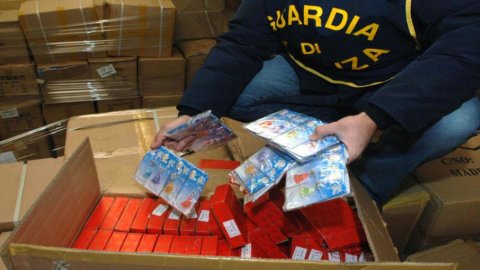The GDP trend does not count for the fake market, which continues to grow in Italy as in Europe, damaging the economy at every level. Only in our country have they been seized 377 million counterfeit products between 2008 and 2014, for a value of over 4,3 billion euros. On average, every year the sale of counterfeit goods is produced in Italy a turnover of 6,5 billion euros, subtracts 5,3 billion to the state coffers and generates a loss of over 100 jobs in the legal market. The numbers were presented today by Francesca Cappiello del Mise, during a conference on counterfeiting organized in Venice by Unicri - the UN institute that deals with research on crime and justice - in collaboration with the Ministry of Economic development, the World Bank Group and Assonime.
The most thriving channel for the fake market is naturally theE-commerce, just think that since 2014 the Guardia di Finanza has blocked almost 300 websites where counterfeit products were on sale. To counter this phenomenon, last July “Italy card”, a “pioneering voluntary agreement not only for the country – explains Cappiello -, but also at European level, signed by rights holders and players in online commerce”, which commits its signatories to put in place “measures that make it possible to identify and prevent offers of inauthentic products”. The Mise also makes available an orientation service to help companies choose the most effective anti-counterfeiting solution, taking advantage of the technology that best suits each product.
But the counterfeit market does not thrive only in Italy. According to estimates reported by European Commission, every year the global counterfeiting industry generates a turnover of over 530 billion euros (more than 1% of world gross domestic product). If we restrict our gaze to only the countries of the G20, in 2011 counterfeiting lost 2,5 million jobs and caused economic damage equal to over 100 billion, of which 63 billion linked to lost tax revenues and the increase in welfare expenditure, 20 to the increase in the costs of crime and 15 to deaths caused by counterfeit products.
As regards the field of action of this type of trade, "if once the counterfeiting industry was focused on money and luxury products - underlines Maurizio Sella, president of Assonime -, today it has extended to most of the sectors, including everyday consumer products”.
According to the numbers quoted by the EU, in 2008 57% of the counterfeit products seized in Europe had to do with the fashion, while 10% consisted of jewelry and watches. THE cosmetics stood at 4%, as well as CD-DVD e toys. Another 7% concerned the Electronic devices, While the medicine accounted for 6% (every year over three thousand people die in the world due to the consumption of counterfeit medicines).
As for the countermeasures that individual states can adopt, according to the number one of Assonime “it is not the task of the public policy impose a uniform solution on all sectors, as such an approach would limit market development and undermine innovation. In some sectors, however, specific needs justify ad hoc regulation in terms of product identification or traceability obligations. Furthermore, the specific tasks of public policy are those of promoting standards for the use of technologies at an international level and of making consumers, especially the new generations, aware of the damages of counterfeiting”.
Attachments: EU, new anti-counterfeiting methods.pdf





